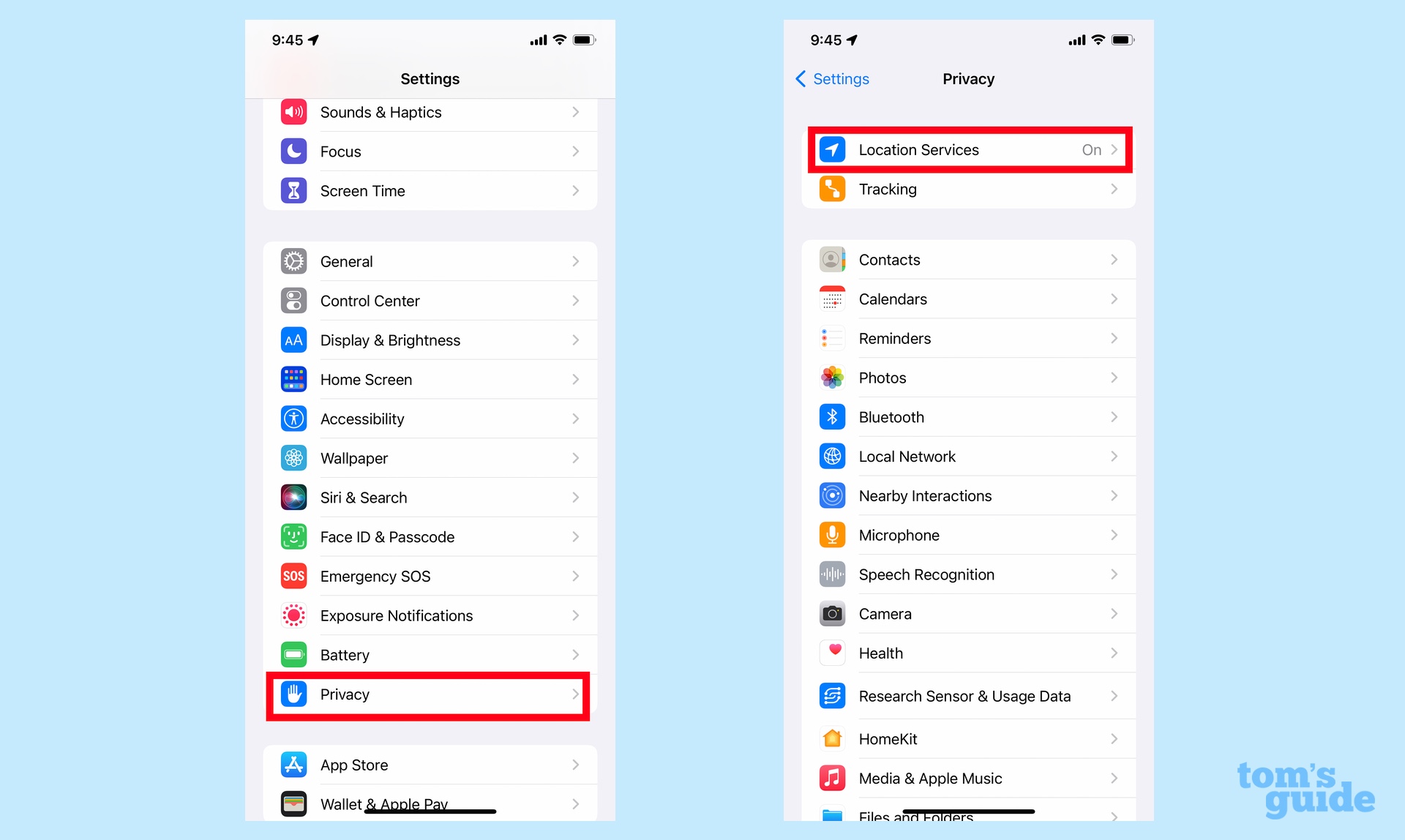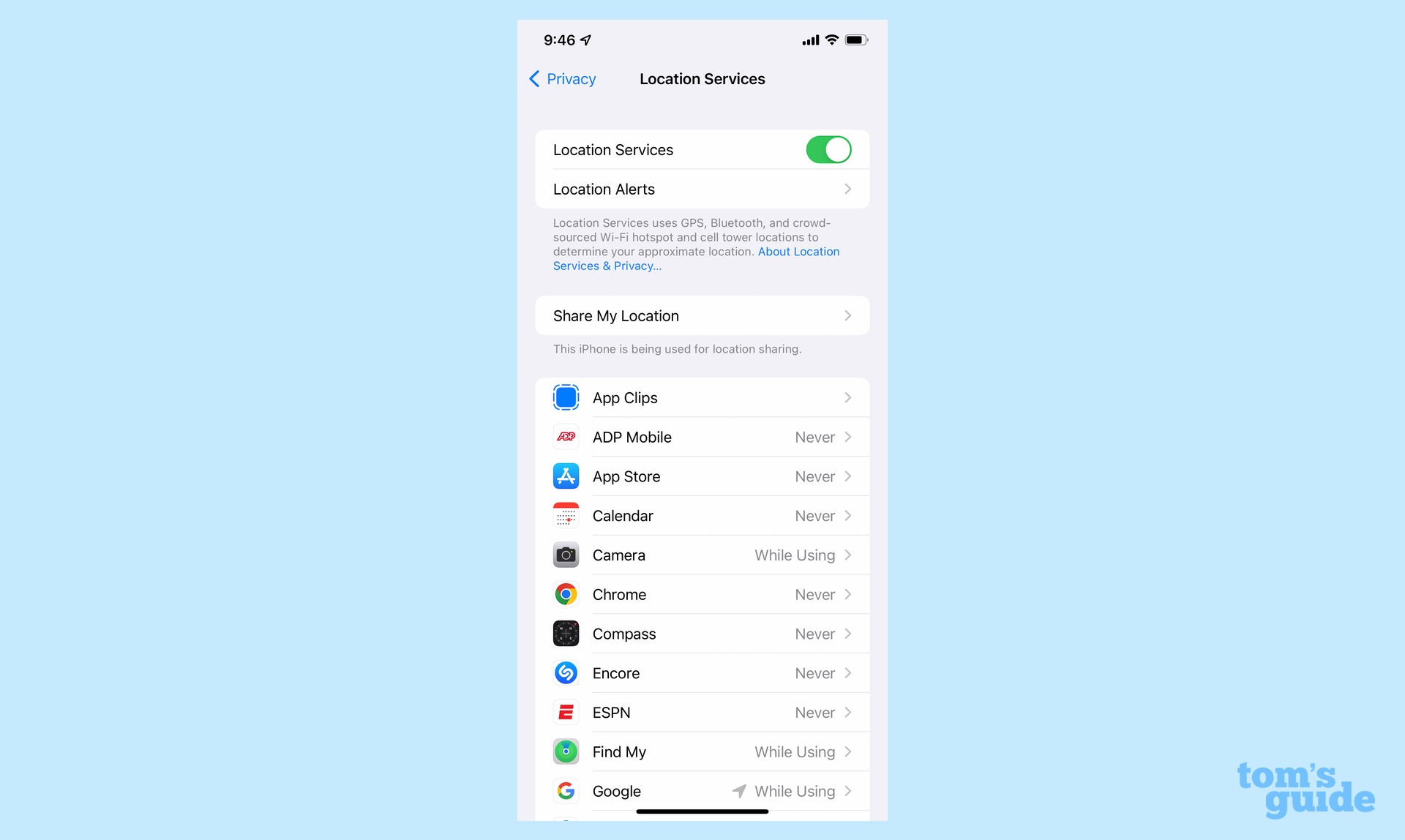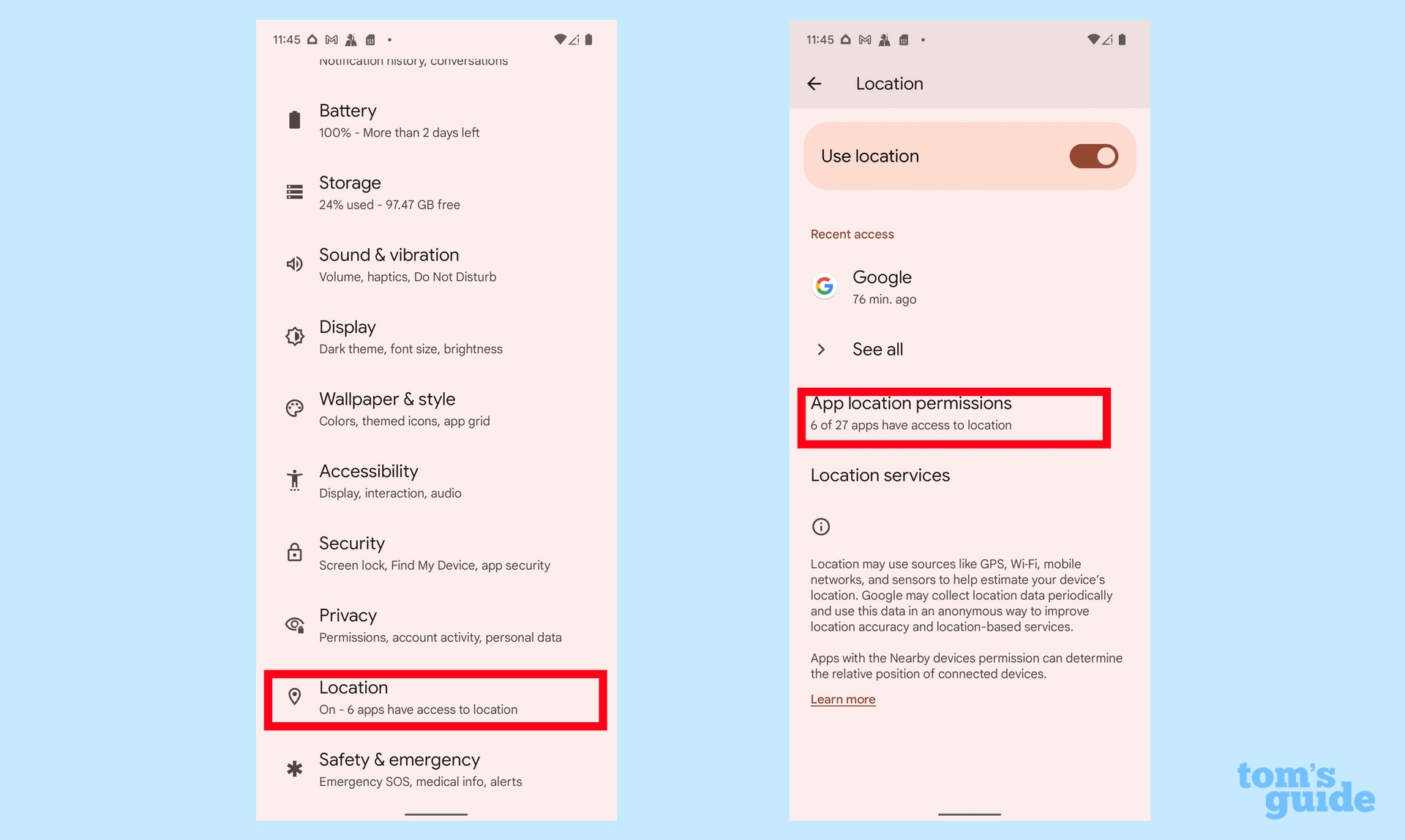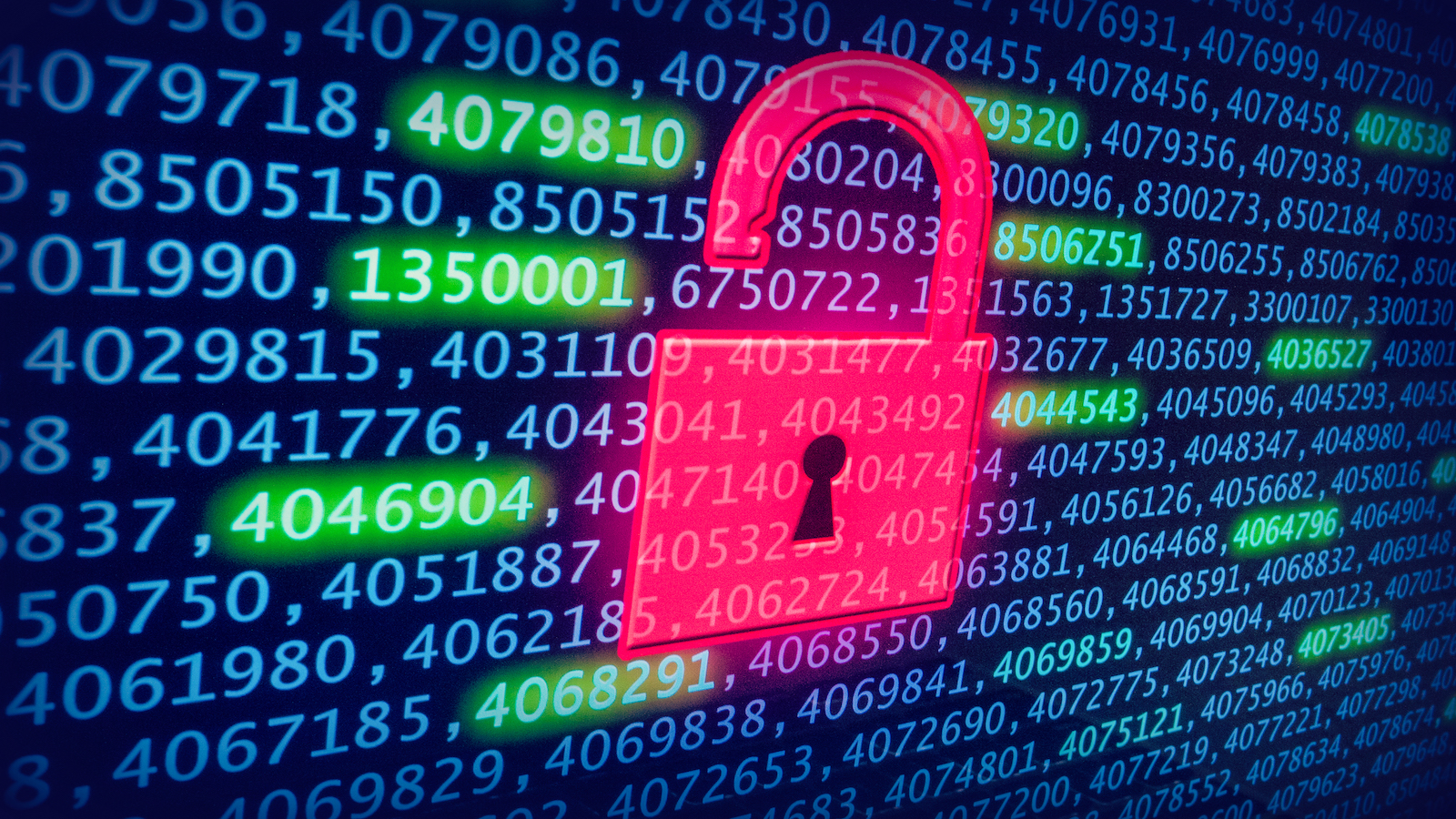Your smartphone location data is for sale — change your permissions right away
Two Vice reports raise questions on who's using your data — and for what purpose

Update: Google Maps and Search get clearer labels for abortion providers.
Do you know what happens to the location data on your smartphone?
A new report claims the Centers for Disease Control and Prevention bought location data collected from tens of millions of phones with an eye toward using it to track compliance with Covid-19 restrictions, along with other potential purposes. And as you might imagine, that's raising some concerns about what groups are able to access the data produced by our smartphones — and what they're planning to use that data for.
The report, published by Vice's Motherboard site, alleges that the CDC bought location data from data broker SafeGraph, whose activities have proven controversial enough to get a ban from Google's Play Store last year. While the data was intended to track compliance with curfews as well as the comings and goings of people heading to K-12 schools, Vice's report also claims that the CDC planned to use its purchased data for reasons unrelated to the Covid pandemic.
Specifically, documents obtained by Vice via a Freedom of Information Act request revealed 21 potential uses cases cited by the CDC. Most appear to be Covid-related but some cite more generic "Research points of interest" for chronic disease prevention, physical activity and mobility during natural disasters. "The mobility data obtained under this contract will be available for CDC agency-wide use and will support numerous CDC priorities," says a CDC document quoted by Vice.
Given that government policies during the Covid pandemic have generated notable opposition — the anti-vaccination movement has seized on any bit of Covid vaccine controversy, real or imagined, to stoke its claims and the political right has leveraged vaccine mandates as a way to fire up its base about government overreach in advance of this fall's election — reports of the CDC paying for tracking data is likely to be controversial. Location data can be anonymous to start with, but in the wrong hands, it can be used with other available information to drill down to identify specific users.
If that's not enough controversy for you, a second Vice report on SafeGraph's data collection activities contends that the company is selling data related to visits to abortion clinics. The data includes where people came from to get to the clinic, how long they stayed and where they went after visiting that location.
Get instant access to breaking news, the hottest reviews, great deals and helpful tips.
The report on SafeGraph packaging data about visits to abortion providers comes amid reports that the U.S. Supreme Court is about to announce a decision repealing Roe v. Wade, the precedent that provides federal protections for abortion. Roe's repeal will set the stage for individual states banning the medical procedure entirely, which could force people to leave their home state to seek medical treatment.
After the story was published, SafeGraph said it would stop selling location data related to family-planning centers.
Regardless, these two reports drive home a common reality about the phones we carry around in our pockets. They're collecting a lot of data about our whereabouts — and a lot of the time, they're doing so without us really knowing about it.
In recent years, Apple and Google — makers of the two most prevalent software platforms for smartphones — have taken steps that give you more control over managing your location as well as limiting what data apps can share and ultimately sell to other people. But managing those preferences can be pretty time-consuming, with those restrictions only going so far. After all, a mapping program that's denied access to your location won't be very effective in helping you navigate or find businesses in your vicinity.
Nevertheless, it's always a good idea to check out your location permission to see just which apps are accessing your whereabouts. Here's a broad overview of what you're able to manage.
How to change location permissions on an iPhone
If you've upgraded to iOS 15 — and if you're using any iPhone bought in the last six years, you probably have — go to the Settings app, tap on Privacy and then select Location Services.

On the ensuing screen, you can scroll down a list of apps to see what your location permissions are for each one. Tap on the app to set the permission to Never, Always or only when you're using the app. You can also designate that an app asks you for location permission the next time you launch it.

The Location Services section in Settings has some other interesting information. Arrows by the different apps can tell you which ones have accessed your location data — the purple arrow means it's been recent, while a gray arrow means it's been in the last 24 hours.
From the Privacy page in Settings, you can also access the App Privacy Report through a link at the bottom of the screen. The App Privacy Report shows you how often apps are accessing your data — in addition to location, you can also get info on who's accessing camera, microphone and other places. Armed with that data, you can then manage or even revoke permissions.
How to change location permissions on an Android device
Android is a little more complicated, given that different phones use different versions of Google's operating system. Google has instructions for managing location settings for different versions of Android, but in Android 12, go to the Settings app and tap Location.

From there, tapping App Location Permissions shows you which apps have access to your location and the level of their access. Tapping an individual app lets you modify permissions. As with iOS, Android has settings for always, never and only when you're using the app. You can also designate that the app asks you for permission every time you launch it.
How to change location permissions for your Google account
In addition to device permissions, you're going to want to check out your Google account, particularly if you use Google Maps. Google stores location information saves wherever you go with any mobile device signed into your Google Account with Location History and Location Reporting turned on. Google uses that data to offer personalized maps and recommendations as well as provide real-time traffic info. (Oh, and you get more personalized ads, too.) But you may have reasons not to want to keep that information lying around.

From your Google account, you can turn off location tracking, either for your entire account or individual devices tied to that account. In addition, you can manage the location history that's stored within your account, either by setting an auto-delete function that periodically cleans out your history or by manually removing individual days. You can delete your location history either through the Google Maps app or in a browser, with Google offering instructions on both ways.
Location history in the spotlight
While good location history maintenance is certainly recommended, it's not going to prevent every app from collecting data on you. (You can turn off location tracking entirely, but that will limit the capabilities of your phone.)
The two Vice reports on just who is using your data is likely to shine more attention on what exactly your smartphone can share with other people, while ratcheting up pressure on Apple, Google and phone makers to make data management features even more transparent.
Here's how to completely disable location tracking on Android.
Next: How private is your personal data on period-tracking apps?
Philip Michaels is a Managing Editor at Tom's Guide. He's been covering personal technology since 1999 and was in the building when Steve Jobs showed off the iPhone for the first time. He's been evaluating smartphones since that first iPhone debuted in 2007, and he's been following phone carriers and smartphone plans since 2015. He has strong opinions about Apple, the Oakland Athletics, old movies and proper butchery techniques. Follow him at @PhilipMichaels.

